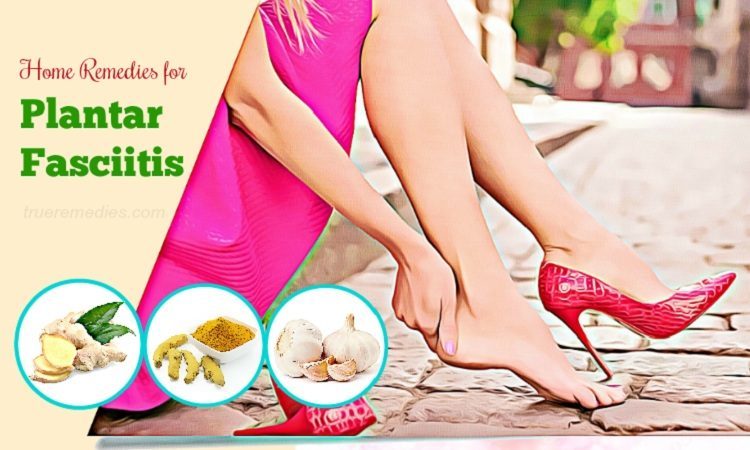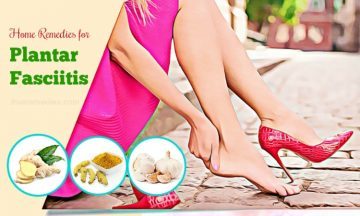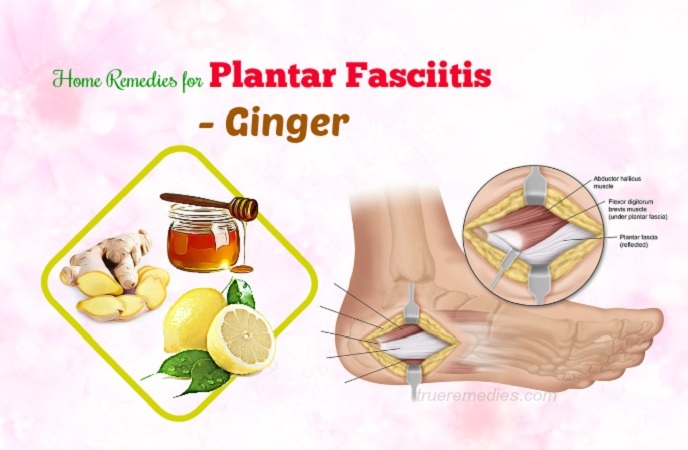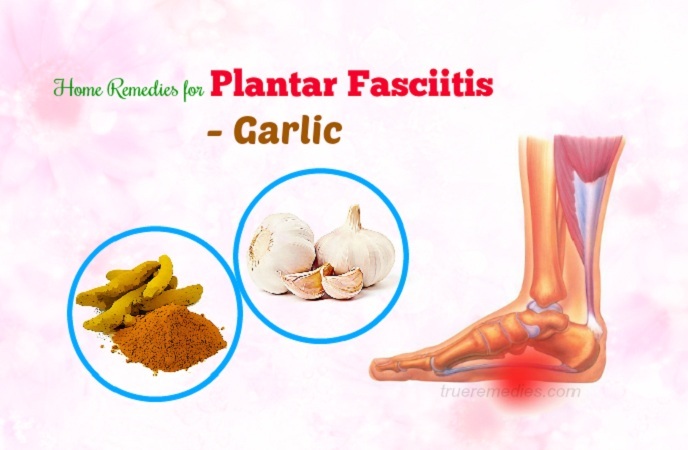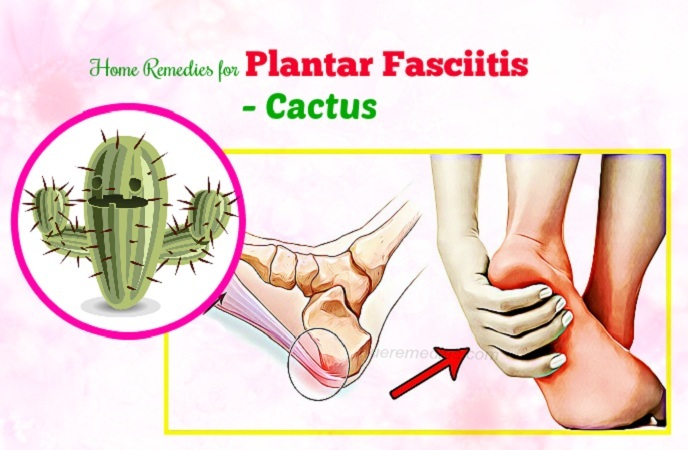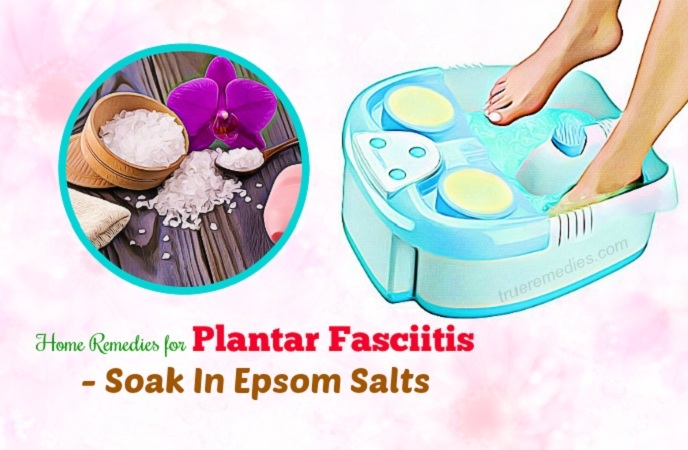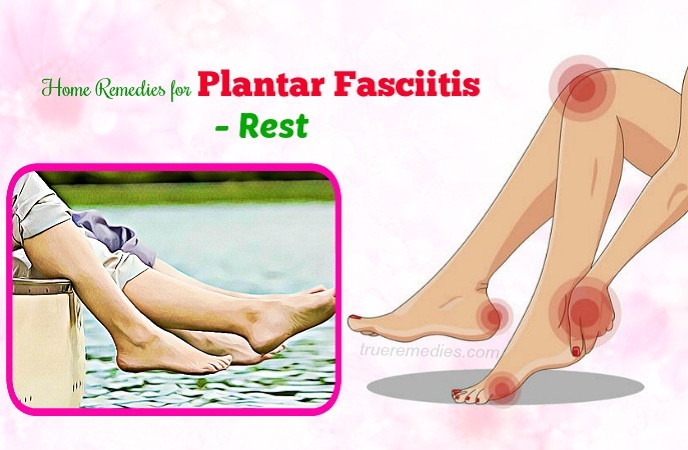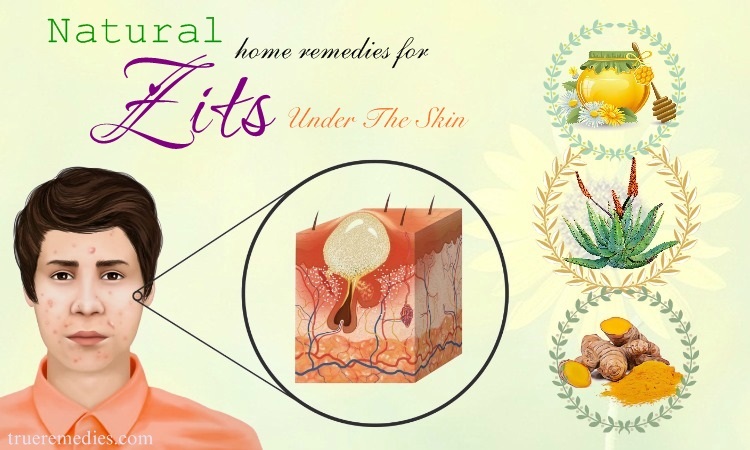updated: 11/19/2019
CONTENTS
Heel pain is a common disorder that results from many causes such as gout, rheumatism, osteoporosis, Achilles tendon inflammation, or nerve compression. Plantar fasciitis occurs under the heel and inside of the soles of the feet. You need to pay attention to this disease so that you can prevent and treat it timely and avoid allowing it to get worse.
What Is Plantar Fasciitis?
Under the sole, there are many layers of tendons bonding the small bones together. The next layer is the muscles, blood vessels, and nerves that control the activity of the feet. The outer layer, just below the thick skin, is a very special tendon called the plantar fascia or plantar aponeurosis. It is a large, flat tendon and shaped like propellers. The propeller sticks to the heels bone called calcaneus, while five propellers stick to each of the toes. This tendon acts as a crooked back of the foot that bends like a bow. That allows us to walk gently and support the weight of the body. Plantar fasciitis[1] is one of the common reasons for heel pain. It is inflammation of a thick tissue band running across the bottom of the foot and connecting the heel bone to the toes.
People with plantar fasciitis commonly experience stabbing pain in the first steps after waking up. When you move more, the pain may decrease, but it may return after standing or rising from sitting for long periods.
Plantar fasciitis occurs commonly in runners. Also, people who wear shoes with poor support, and those who are overweight have a high risk of plantar fasciitis.
- 18 Natural Home Remedies For Athlete’s Foot In Between Toes
- 16 Natural Home Remedies For Foot Pain And Swelling Relief
- 17 Tips How To Get Rid Of Cramps In Hands, Calves & Toes Fast
What Are Common Causes Of Plantar Fasciitis?
In normal cases, the plantar fascia works as a bowstring to absorb shock, which supports the arch of the foot. If stress and tension on the bowstring get too great, small tears may occur in the fascia. Recurrent stretching and tearing can the cause of irritated or inflamed fascia, though in many circumstances of plantar fasciitis, the cause is unknown.
TrueRemedies Partner Solutions

Need a Help from the Leading Expert Online, Available 24/7?
They’re all here and ready to answer your questions online or by phone. Keep asking questions until you get the answer you need.
Some other cases that lead to the plantar fasciitis include:
- Injuries due to overactivity
- Sudden weight gain for a short time, e.g., pregnant women
- Overweight and obesity
- Daily works that need to stand for long periods
- Long-term diabetes
- The flat foot that creates pressure on the inside of the foot and ligaments (plantar fascia)
- Wearing shoes incorrectly
- Other problems associated with heel pain, e.g., arthritis, reactive arthritis, rheumatoid arthritis, gout, neurological disorders (sciatica, tarsal tunnel syndrome, stress fracture), and bone bruise due to injury and heel bursitis.
What Are Symptoms Of Plantar Fasciitis?
Plantar fasciitis often causes pain like a knife stabbing the sole of the foot near the heel. The pain may be the worst in the first steps after waking up, although it may also be triggered by rising from sitting or standing for a long period of time. The pain may be worse after exercise, but not during it.
Other symptoms of this condition include the stiffness in the foot, swelling in the heel, and numbness due to compression of the hepatic nerve compression.
Diagnosis And Complications
Diagnosis of plantar fasciitis is only based on a history of physical examination and physical examination.
Sometimes X-rays or MRI may be recommended to eliminate other problems, such as fractures and pain due to nerve compression. Sometimes X-rays show heel spur. Spine heel (or heel spur) is caused by calcium deposition which forms a small bony papilla on the underside of the heel bone. This process occurs over several months (> 6 months), due to the stretching of the muscles and ligaments in the leg, the weight of the leg, the repeated healing of the heel. Normally, the plantar fascia will be healed through fibroblast activity for at least six weeks. If the injury persists beyond this time, the bone marrow is mobilized into the area, which leads to calcification.
Previously, heel spur was often attributed to pain in the heel and was treated by surgical removal. But, many patients with plantar fasciitis do not have a heel spur, and many patients also have a heel spur without heel pain. Today, it is thought that heel spur is not responsible for the plantar fasciitis. It is the result of this process. Therefore, it is no need for treatment or elimination.
Who Is At Risk Of Plantar Fasciitis?
Risk factors that may increase the risk of developing plantar fasciitis include:
- Age: Aging decreases the flexibility of the plantar fascia and contributes to the risk of plantar fasciitis. It occurs commonly in the age group of 40-60 years, and it is more common in women than men.
- Obesity: Excess weight creates pressure on the heel and causes plantar fasciitis.
- Some types of sports: Repeated motions exert pressure on the heel and adjacent tissues, such as long distance, dance, and aerobics. When running, the vertical gravitational impact on the foot may be 2-3 times the body weight.
- Occupation: Factory workers, teachers, and pedestrians, or standing on hard surfaces are at high risk of this condition.
- Foot defects: Flat feet or arches of the feet are too high, or walking may increase the pressure on the heel.
When To See A Doctor?
In cases you have a serious injury or degeneration, which makes the plantar fascia be severely injured, you should see a doctor for a direct examination. If you have signs and symptoms of plantar fasciitis, but the application of the home remedies we are discussing below does not work, or whenever you feel too painful, you should see a doctor.
You have discovered some information about plantar fasciitis. Now it is time to find out what the best home remedies for plantar fasciitis are. Take a look at TrueRemedies.com!
Top 10 Natural Home Remedies For Plantar Fasciitis Pain
1. Ginger
The spicy taste of fresh ginger has a very strong antagonistic effect[2] on the oxidation of tallow, compared to the antioxidants currently used. This ingredient of ginger, when being absorbed by the body, will produce the effect of inhibiting the formation of fatty substances through oxidation in the body, so ginger has the anti-aging effect.
Ginger has anti-inflammatory properties[3] and may be used to treat rheumatoid arthritis[4], osteoarthritis[5], and other muscle disorders[6]. Drinking ginger tea and soaking hands and feet in ginger water every 15-20 minutes may treat arthritis. This natural treatment has the effect of reducing the symptoms of pain and swelling.
Method 1: Ginger And Honey
Directions:
- Remove the ginger shell and then wash it with water.
- Then, cut the ginger into small slices, put it into the pot of water, and boil it.
- When boiling, reduce the heat and let it simmer about 20 minutes to reduce the spicy.
- Add 3 teaspoons of honey to it and boil for 5-7 minutes.
- Turn off the stove and let the honey ginger cool for a while.
- After the ginger juice has cooled down, you put them in a glass jar and store it in the refrigerator (for multiple uses.)
- Take a cup of tea and add a little of the ginger solution in the refrigerator to the tea. You can use it immediately.
You should drink ginger tea when it is hot. Let’s drink slowly and relax in the morning or in the evening to achieve the best health effects.
Method 2: Ginger Tea And White Sugar
Directions:
- Remove the shell of ginger and wash it with water. Scrape it off
- Take a small pot for a moderate amount of water and boil. Next, you put the scraped ginger into a small glass.
- Add the boiling water to the ginger and wait for about 10 minutes.
- After that, add white sugar and stir them well.
Method 3: Ginger, Lemon, And Honey
Directions:
- Clean ginger and cut them into slices.
- Put enough filtered water into a small pot, add the slices to it, and then turn on the stove to simmer for about 10 minutes.
- After that, you turn off the stove and pour the ginger juice into a glass.
- Then, squeeze the juice from ½ lemon, and add it and 1-2 tablespoons of honey to a glass of hot ginger juice.
Notes:
- Do not overeat ginger: It may cause dry mouth and thirsty and heat in the body.
- Do not use ginger for people with heatstroke
- People who have a high fever, do not eat ginger because it may cause the body temperature of patients to be high up and damage the blood vessels, even hemorrhage.
- Ginger has substances that primarily work on the gastrointestinal mucosa and intestines. Therefore, it may irritate the lining of the stomach. If you have stomach problems, you should avoid it.
- Ginger may break down weak blood vessels; so, people with a history of bleeding disorders, such as nosebleeds, uterine bleeding, or hemorrhoids, should not eat ginger to avoid serious illness.
- Although ginger is good for the treatment of pregnancy conditions such as nausea and vomiting, you should limit ginger consumption during the late pregnancy because ginger may cause hypertension that is dangerous for pregnant women.
2. Turmeric
Turmeric has an active ingredient called curcumin that has been well studied on human health thanks to its anti-inflammatory and anticancer properties. It helps protect you from certain kidney diseases[7] [8] [9] and liver diseases[10] [11]. Not only does turmeric help to restore health for postpartum women, but it also helps treat gastric pain, duodenum, and chronic diseases, cardiovascular, liver, gallbladder, and even high blood lipids. If you are injured outside the skin, it is possible to use fresh turmeric to cover the wound, helping the wound heal faster without leaving scars.
Method 1: Turmeric And Fresh Milk
Directions:
- Mix 2 teaspoons of turmeric starch with 200 ml of fresh milk
- Drink the solution 2 times per day, once in the morning and once in the evening
If you want to lose weight, use fresh milk without sugar (or mix turmeric with filtered water). Especially, turmeric starch, when mixed with milk, it is not bitter or pungent. It is tasty and easy to drink.
Method 2: Turmeric And Honey
- Mix 2 teaspoons of turmeric starch, a little honey, and 200ml of water (the amount of honey depends on your taste)
- Use to drink in the morning, evening
Note: You can cook with turmeric powder or add it to a glass of smoothie or tea.
3. Garlic
Garlic contains allicin, a natural antibiotic compound that may help to kill virus and bacteria, causing common diseases[12] [13]. Garlic oil has glucogenic amino acid and phytotoxic that offer antiseptic, anti-inflammatory activity[14] [15]. Garlic is used for the treatment of inflammatory diseases of the skin and gastrointestinal and respiratory diseases effectively[16]. However, you should use only one or two garlic cloves daily for better health. You can use fresh garlic or garlic powder to add to soup, meat, vegetables, and salad or eat raw.
Directions:
- Peel garlic and cut garlic into small slices or pound it
- Add the garlic and 1 liter of white wine to a bottle
- Leave it at a cool room for 10 days and occasionally shake the wine bottle.
- Drink it twice a day, once in the morning and once in the evening with a dose of about 40 drops (1 coffee muff)
4. Cactus
This is another must-try home treatment in this list of home remedies for plantar fasciitis. Cacti have commonly been used by ancient time for centuries to treat diseases and heal wounds. The cactus trunk contains many chemical triterpenoids. They are taraxerol, friedelan, epifriedelanol, citric, tartaric, and fumaric acid. The trunk of cactus has an antiseptic effect while cactus leaves have detoxifying properties. The resin of cacti has the effect of lowering water retention and itchiness. In addition, cacti contain an anti-inflammatory and antioxidant activity[17], and have the anti-ulcer effect that helps to fight against gastric lesions[18] [19].
Directions:
- Choose the type of cactus having thorns, remove all thorns, and separate the cactus trunk into 2 pieces
- Every night before you go to bed, use the cactus trunk to cover the pain. You can use gauze or cloth to secure the cactus in place
- Leave it until the morning and then remove it.
- Do this remedy for a week
5. Vinegar
Vinegar is very effective in eliminating and preventing the reproduction of harmful bacteria[20] [21]. Foot ulcers may be caused by the accumulation of dead cells and friction with certain types of footwear. Meanwhile, the acidity in vinegar acts as a skin scrub and soothes the skin, thereby removing dead cells and softening the calluses on the legs.
In addition, the vinegar, when applied to the skin, helps to add moisture to the skin[22] [23]. Furthermore, regularly exfoliating the feet reduces the appearance of calluses, which helps to reduce plantar fasciitis.
Directions:
- Prepare 2 liters of vinegar
- Heat it up to the point that you can immerse your feet into it
- Pour it into the basin and soak your feet for about 30 to 60 minutes (if the vinegar cools down during the process, you need to make it warm again).
You should apply this remedy for a month to stop the pain. This is considered the most economical remedy, but its result is amazing.
6. Soak In Epsom Salts
Compounds of magnesium and sulfate in Epsom salts help remove toxins[24] and heavy metals in skin cells, which helps to reduce inflammation, increase blood circulation, and relieve muscle pain and joint pain. Once the magnesium is absorbed through the skin, the analgesic ions will be released to help calm the muscles and nerves. In addition, sulfate also has the ability to eliminate harmful substances from the body.
Epsom salts have the potential to reduce inflammation, relieve itching, pain, and soreness[25]. Cleansing the skin with Epsom salts is also very good. It is worth mentioning in this list of home remedies for plantar fasciitis.
Directions:
- Add 3 tablespoons of Epsom salt to warm water and soak your feet for 20 minutes
- Then massage your feet for 5 minutes
- Dry your feet with a soft towel
This remedy helps relieve muscle pain, soften the skin, and remove foot odor. Doctors recommend Epsom saline to relieve muscle pain caused by arthritis, diabetes, and sports injuries. It helps to relax and detoxify the entire body, and relieve stress.
Note:
Overuse of Epsom saline for foot bath may lead to dry and cracked feet. Use a pedicure spa only 2-3 times a week for 30 minutes. People with dry skin should try to use less Epsom salts and massage with olive oil or moisturizer after soaking and drying their feet.
7. Ice
Soaking feet with cold water may enhance the function of the central nervous system and excite the brain, thereby regulating the activity of the whole body organs. Therefore, it prevents you from some diseases, such as headaches, depression, and insomnia[26]. Soaking feet with cold water also enhances the function of the respiratory organs and prevents cold sores, tonsillitis, and bronchitis. This remedy helps enhance the adaptability of the body to the external environment, expand the veins of hands and feet, and slow down the aging process of joints of the lower limb.
Directions:
- You should soak your feet from your ankles down with cold water (about 20 degrees Celsius) for 10 minutes. During soaking the feet with cold water, the cold temperature of the water must be slowly lowered
- Normally, water can be lowered from 20 degrees Celsius to about 4 degrees Celsius. If the water is too cold, soaking time should be 5 minutes.
Apply this remedy for 15 minutes several times a day.
Note: To make the treatment become more effective, you need to massage your feet to warm them up and then soak feet in cold water. After soaking your feet, rub your feet together immediately until your feet are pink and warm. If you do so, soaking feet with cold water will work better.
8. Fish Oil
Fish oil is rich in eicosapentaenoic acid – a type of omega-3 fatty acids that help to relieve pain and stiffness. Research has shown that omega-3 fatty acids act as a steroid or a drug used to treat arthritis pain[27] [28] [29]. You should drink less than 3g of fish oil per day. Using fish oil at a dose of 3g or more a day may cause blood clotting problems, reduce the epididymis, and increase the risk of bleeding in surgery patients.
9. Rest
This sounds too simple in regard to home remedies for plantar fasciitis. Resting is very important for the treatment of fulminant hepatitis, especially for highly active individuals or those with work requiring standing. You should go to swimming and biking, instead of walking or jogging[30] [31]. Changing walking patterns to reduce pain due to foot inflammation may also reduce the problems related to the legs, knees, hips, and spine.
10. Weight Loss To Reduce The Pressure On The Heel
As you know that weight gain causes plantar fasciitis and make you feel pain[32] [33]. Therefore, the thing you need to do is weight loss to reduce the pressure on your heel. This is one of the basic home remedies for plantar fasciitis.
Method 1: Drink A Lot Of Water
You won’t let yourself be thirsty by drinking lots of water. The feeling of thirst is very easy to confuse with hunger. Eating plenty of fruit will keep you from thirsty and full for a long time. Do not drink water only when you are thirsty. Drink constantly and regularly during the day to decrease a craving.
Method 2: Salad
Eating a salad before every meal helps you not to eat too much at meal time. You should also keep in mind not to eat things like grated cheese, sauces, or creams as they are high in fat.
Method 3: Gum
Keep your mouth busy by chewing mint gummy candies. This also helps you reduce appetite so that you do not think of food anymore.
Method 4: Sleep
Having enough sleep has a direct impact on weight loss, so this is also a great way to lose weight. Sleeping less will make you eat more and not be wise in choosing food. Get enough sleep to help you stay alert and have more energy to work effectively. In addition, exercise also helps you easy to have a good sleep, and it is beneficial in treating plantar fasciitis[34]. If you are used to sleeping less than practice, you can try deep breathing, reading books, or listening to music to relax your mind.
Method 5: Vegetables
Vegetables and fruits are nutritious, low in calories, good for the body, and they can be used in a long time. Do not add cream, cheese, butter to vegetables. Eating fiber-high fruits is another way to lose weight, which will make you feel full longer because your body digests fiber longer than other substances.
Method 6: Food
The protein contains very little calories. Foods, such as eggs, lean meat, skinned poultry, and low-fat dairy products, are good options for meals. A light meal, including yogurt, low-fat milk, or boiled eggs, will help increase energy and give you a feeling of fullness for longer.
The natural home remedies mentioned above are claimed to be able to reduce symptoms of plantar fasciitis. Although the home remedies are quite time-consuming and slow-acting, the results make you surprised. Choose some of them and alternate them in your treating to see how effective they are. If you have any contributing ideas about our article, do not hesitate to drop your words below this post. We will answer as soon as we could.

